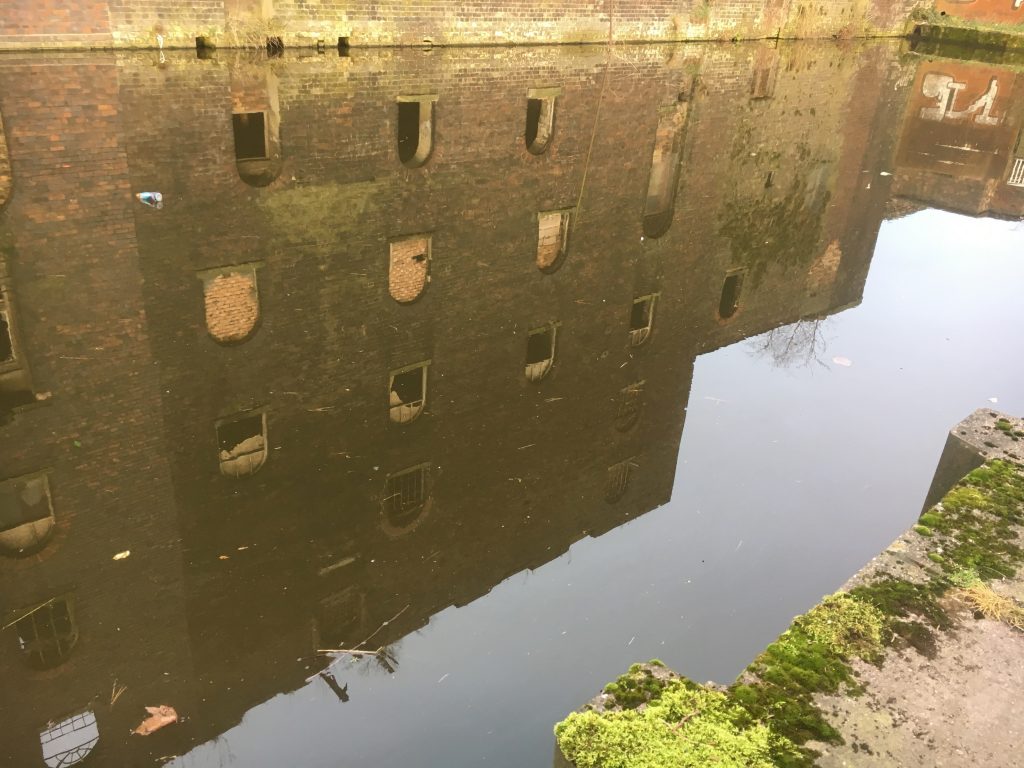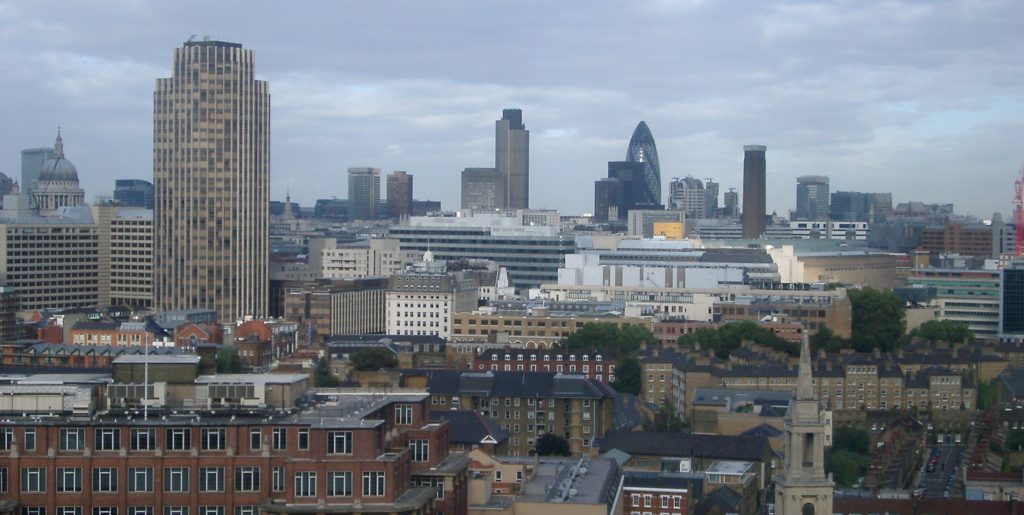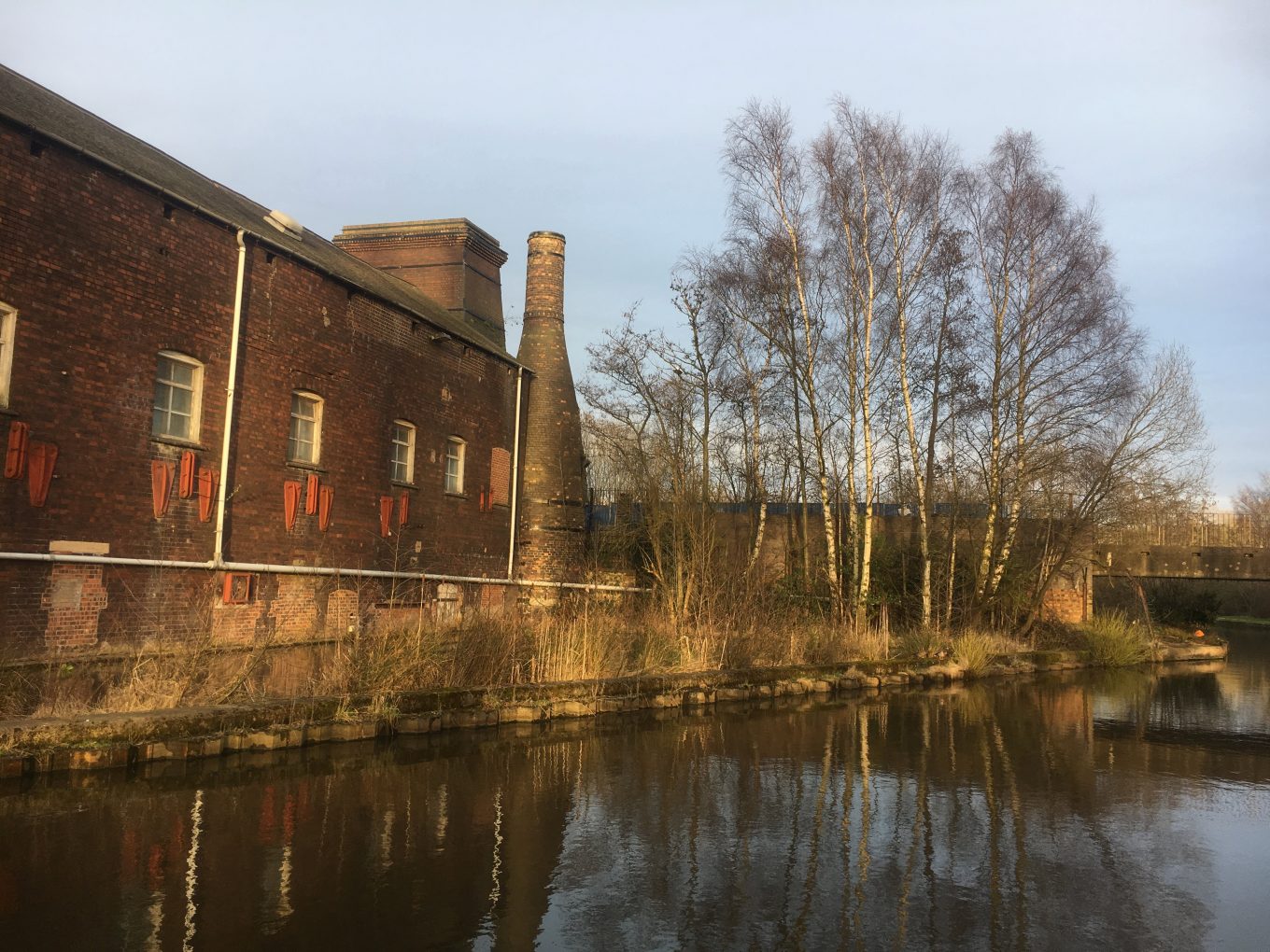As the government launches its Levelling Up white paper, John Montgomery argues that many towns and cities struggle to sustain meaningful work and prosperity and will only survive and thrive if they succeed in growing industries, business, jobs and wealth. This is the only way to ‘level up’
 The saddest book on cities is The Lost City of Stoke-on-Trent by Matthew Rice[1]. Rice, who is married to the pottery owner Emma Bridgewater, charts the long decline of the potteries, the disappearance of famous names, the off-shoring of production and the loss of jobs. Only a dozen or so potteries remain in a city that was once a great centre of wealth creation, innovation and industriousness. Rice shows how successive attempts at urban renewal have failed to reverse Stoke’s fortunes. Once a local economy loses its dynamism, the place itself stagnates and may even die.
The saddest book on cities is The Lost City of Stoke-on-Trent by Matthew Rice[1]. Rice, who is married to the pottery owner Emma Bridgewater, charts the long decline of the potteries, the disappearance of famous names, the off-shoring of production and the loss of jobs. Only a dozen or so potteries remain in a city that was once a great centre of wealth creation, innovation and industriousness. Rice shows how successive attempts at urban renewal have failed to reverse Stoke’s fortunes. Once a local economy loses its dynamism, the place itself stagnates and may even die.
Not long ago, The Economist weighed in with a Leader calling for ‘ghost towns’ such as Wolverhampton and Hartlepool to be abandoned: ‘Some towns cannot be preserved. Save their inhabitants instead…Despite dollops of public money and years of heroic effort, a string of towns and smallish cities in Britain’s former industrial heartlands are quietly decaying’[2]. It is not just Stoke that’s in trouble and we – the people who work in urban development, economic development, planning and urban design – remain undecided as to how to get self-sustaining local economic development purring in the towns and cities of the UK’s regions.
‘Bathgate no more, Linwood no more, Irvine no more‘
The Proclaimers
As I have written elsewhere, economies develop in cycles and new industries take hold in certain places but not others[3]. It is a story that goes back to the 1920s and 1930s and much further into the early 19th century at least. The planner’s traditional response to industrial decline in the regions since the 1940s has been to control development in the South and use regional policy in the North, a policy mix that has been followed, with variations here and there, over most of the post-war period. It has not worked. It is easier to say no to new development around the M25 than it is to spark economic development in the towns and small cities across the North and parts of the Midlands, Scotland, Northern Ireland and South Wales? It is this more difficult side of the equation that is now most urgent if we are to ‘level up’.
Growth and Decline in the UK’s Regions

Regional policy was first proposed in 1929 when proposals were presented to cabinet by Philip Snowden[4]. It was prompted by a wave of business failures and job losses triggered by the stock market crash although, in truth, the old areas of industrial Britain were already in serious decline. The failing industries were cotton, wool, railway engines, coal mining, steelmaking, and shipbuilding. The regions affected were South Wales, Lancashire, West Yorkshire, the North East and the central belt of Scotland.
This contrasted with a boom in new industries in the South and the West Midlands as J. B Priestley[5] observed on his English Journey: ‘You notice them decorating all the western borders of London…. Potato crisps, scent, toothpastes, bathing costumes, fire extinguishers; those are the concerns behind these pleasing façades; and they seem to belong to an England of little luxury trades… These decorative little buildings, all glass and concrete and chromium plate, seem to my barbaric mind to be merely playing at being factories’.
But it wasn’t a game, West London was developing specialisms in electronics, food-processing, automobile parts, household goods, aviation and radio and television. Elsewhere towns were able to graft new work onto old and became wealthier as a consequence. Places such as Crewkerne, Reading, Northampton, Axminster, Frome or Kings Langley specialised in activities such as brewing, baking, carpet-weaving, shoemaking, paper or food production. Part of the reason was infrastructure – canals, rail and later roads – connecting producers to markets and customers, but this is a necessary rather than a sufficient condition. From Kings Langley, Ovaltine was exported around the world.
UK Regional Policy
Instead of looking to these successful Southern towns the central planners of the 1940s looked for inspiration to the northern industrialists such as Titus Salt (Saltaire, woollens), George Cadbury (Bournville, chocolate), William and James Lever (Port Sunlight, soap) and Robert Owen (New Lanark, cotton). Each of these model towns had developed following the successful introduction of new technologies and industries. But once these waves had been exhausted, or overseas competition had become too strong, the towns often declined because. unlike Reading, West London or Kings Langley, there was a failure to adapt, a lack of entrepreneurial drift – the process of creating new work simply stopped.
The post war Labour government believed strongly in central planning and set about diverting industrial development to the North. A new town programme was launched but this had more to do with dispersing population rather than economic growth. The North was offered nationalized industries, branch plants, government departments and bail outs. Industrial development permits were introduced to stem the growth of new factories in the South. During the 1960s this approach was extended to office development. A policy was introduced in 1965 to prevent office development in London and the South and even Birmingham which had boomed during the 1950s[6]. This was supposed to transplant industrial and office activity to the North, Scotland and South Wales. It largely failed.
It is not enough to redistribute or redirect wealth, it has to be created
–
By the late 1970s, the old industries in the regions had almost completely collapsed. As the Proclaimers sang; Bathgate no more, Linwood no more, Irvine no more[7]. The footloose branch plants disappeared, the nationalised industries were dying. There was no new work, and so no new jobs. There had not been enough private sector investment, there was no growth, and few opportunities other than in a few places like East Kilbride, Swansea and Middlesbrough that became public sector towns. Why should this have happened when the road to regional policy was paved with good intentions?
My own view is that UK regional policy was quite the wrong model. Spending on ‘infrastructure’, relocation grants, draconian development permits, nationalised industries, ‘footloose’ branch plants[8], government towns and the rest were doomed to failure. It is not enough to redistribute or redirect wealth, it has to be created.
Back in the South, London continued to expand, extending its influence from East Anglia to Bristol and as far North as Northampton and Coventry. Regional planning, that been a minority interest in the early 80s[9], was once more a concern of policy makers with academics like Peter Hall and Mike Breheny[10] bringing together spatial growth, transport planning and economic development. Substantial investment went into motorways and rail connections especially around London. The Channel Tunnel was built and the London airports expanded, all to serve the expanding southern economy. Growth industries were taking hold and growing, including aerospace around Bristol, pharmaceuticals in Stevenage, the Cambridge Phenomenon, and new and expanding office sectors for financial services – out to Northampton, Basingstoke, MK and Norwich. Television, the media and creative industries[11] were focused in London together with some food processing, brewing, finance, producer services and a lot more. The development wave has continued ever since including now the Oxford-Cambridge Arc.
City Regions
These changes need to be understood at the level of the city region. It is important to understand what regions are, how investment and prosperity develops and where, why and how regional economies develop and prosper[12]. Two interlocking processes of economic development are at work.
The first is the fundamental role of city regions in economic development. While macro-economics talks about GDP or borrowing large amounts to ‘stimulate’ aggregate demand, ongoing economic development occurs in successful city regions. These have old specialisms but they also constantly develop new specialisms, produce exports, and become more diverse. They develop new work through a process of drift, and the key to this is the entrepreneur and the investor. This process builds on itself and so wealth creation is a process of investment and production, or supply, in city regions.[13] It is important to understand why this investment occurs (or does not) and which sectors are growing and expect to grow. The important thing is to understand the make-up of an economy sector by sector. This approach was pioneered in the UK by Robin Murray[14] and people such as Charles Sabel[15]
It is better to have variations in wealth in a prosperous economy than to be equal in a stagnant, backward or failing economy
–
Second, this process builds upon itself over decades and centuries. Old work can continue profitably, but new work comes mainly from waves of technological change. Economic development is not linear, it does not proceed in a predictable, orderly manner. Rather it grows and falls back in leaps and bounds. It is cyclical. These cycles follow closely waves of technological change, and so every 50-60 years or so a new cycle of prosperity begins[16]. The period we are now living in has been termed the ‘Carrier Wave’ by Sir Peter Hall[17] and others. Although the early inventions date back further, from Stockley’s transistor to Microsoft and Apple, the commercialization of these technologies builds slowly to begin with and then suddenly it grows like topsy. We can posit that the Carrier Wave as an episode of wealth creation dates in a commercial sense from the mid-1990s, leading to what Carlota Perez[18] called the Dot Com ‘feeding frenzy’ and bust of 1999.
The most successful city regions – London, Milan, Boston, Copenhagen, Prague, Austin, San Francisco – all include the new wealth-creating technologies and industries. In some places these dominate the economy just as cotton did for Manchester or shipbuilding for the Clyde. Yet the most successful have other industries too, and these are not all Tech or biotech but the seeming less glamourous pursuits of food production, clothing, electronics, car manufacturing, boot-making, banking, brewing…. We also have office-based work, commercial property development, professional services and broadcasting. And for many regions and cities tourism is an export economy, earning export dollars. These diverse economies support consumer services such as retailing, hospitality, the nighttime economy, the arts and entertainment.

These economies are dynamic and self-generating rather than mono-sectoral. There are in fact such city regions within the North and South Wales – Manchester, Leeds, Cardiff-Swansea-Newport (and Bristol). Scotland has Edinburgh (which extends its influence across the Lothians and into Fife) and Aberdeen.
It is true of course that all of this economic development is not spread ‘equally’ within regions just as it is not uniform between regions. But in a prosperous city region all boats rise as activity grows and strengthens. I could make this point more bluntly: it is better to have variations in wealth in a prosperous economy than to be equal in a stagnant, backward or failing economy. Birmingham as Boston, or Bogata?
To express this as succinctly as I am able, dynamic economies are based in real places – cities and regions and connected towns. It is the private sector that creates wealth, not governments. Economic growth and wealth creation depend on a process of continual innovation and improvisation, so that successful economies are open-ended rather than goal-oriented. Growth depends on trade, exports and inter-trading. Small businesses and start-ups are often key sites of innovation and thus a source of new work. Some of them will trade in the lead industries of the day, but others will find a niche supplying goods and services to local, regional and national markets. A few will export overseas.
Successful regions, city regions, cities, towns and small cities will have core specialisms, reasonably diverse economies and some level of higher value production in goods they export to other places. Advanced communications technologies will of course play a role, but so too will the less glamorous infrastructures like rail and road freight. If such towns and cities retain or attract the footloose self-employed, then chances are local shops and restaurants will also benefit.
Levelling Up
What does this imply for Boris and Levelling Up? This will only succeed via economic development, growth and prosperity in the North which in turn hinges on private sector investment, especially but not solely in new work, new industries made possible by new and evolving technologies. Older forms of work and particularly specialisms are also important, although some may also need to be restructured and readapted. Scotland, for example, has successful export industries in food production and whisky. Some old industries such as lacemaking or linen clothing may be revived.
Governments have a role in this, especially in analysing and understanding their economy at the sectoral and regional level. They must also ensure that the economic environment is conducive to investment and entrepreneurial by addressing supply side barriers: lower taxes, fewer regulations, overcoming the lack of skills, a positive attitude to businesses. Ideally, these measures would apply across the whole region, but it may be necessary to focus on certain places, cities, towns and networks of the same or in special zones.
The temptation to ‘pick winners’ should be avoided. Programmes to support or invest directly in industry sectors, companies and funds must be very carefully considered, sensitive to the private sector’s needs and to the direction and drift of markets. There are many examples of government officials funding industries or geographic regions where private interest simply did not exist. The result has been wasted resources, seeming rather than doing.
Spending large amounts of taxpayers’ money on unnecessary ‘infrastructure’, vanity projects and bridges to nowhere, likewise, is not helpful. Spending on transport may well be necessary, but it is never of itself sufficient. It may even be counter-productive: High-Speed Rail is a double-edged sword since it is as likely to attract more people to commute to London. There is more to economic development than roads, rail and the internet, important though these are. The approach of sending transfer payments and gloomy civil servants to the North is similarly unhelpful in any sustainable long-term sense. These are simply transfer payments.
To conclude, the only way to grow dynamic city regions is to recreate the conditions that support investment, new work, businesses and jobs. It’s hard, but nothing else will work. Only real economic development can underpin the wealth and prosperity of city regions, small cities and towns. And so, the only way for stagnant cities and towns in the North of England and the Celtic Fringes to prosper is for them to develop economically though innovation, investment and entrepreneurialism, exports, and hard work, supported by low taxes and light regulation.
John Montgomery
[1] Rice, M. The Lost City of Stoke-on-Trent, Frances Lincoln Ltd, London 2010.
[2] City Sicker: Britain’s Decaying Towns, The Economist, 10th October 2013. See also the accompanying article on ‘Ghost Towns’.
[3] Montgomery, J. The New Wealth of Cities, Ashgate, Aldershot, 2007.
[4] The first Labour Chancellor of the Exchequer in 1924 and again in 1929-31. He opposed Keynesianism.
[5] “English Journey” (2018)” by J. B. Priestley, Tom Priestley, Lee Hanson, Stuart Maconie.
[6] The Control of Office Employment Act 1965 applied to the Birmingham conurbation, effectively banning all further office development for almost two decades.
[7] The Proclaimers, Letter from America
[8] Hall, P and Tewdwr-Jones, M., ‘Urban and Regional Planning’, now in its sixth edition, Routledge 2019.
[9] Analysed and documented by Robin Murray and his colleagues at the South East Economic Development (SEEDS) Association
[10] Michael J Breheny and Peter Hall (eds.) 1999. The people – where will they work? National report of the TCPA Regional Inquiry into Housing Need and Provision in England. Town and Country Planning Association.
[11] From a declining employment base in the 1980s, the creative industries in London boomed and by 2010 employed some 250,000 people directly. Other cities also saw growth in this sector, notably Manchester and Sheffield. But not every city and town can grow such strong industries locally.
[12] Montgomery, J. Upwave, Ashgate, Farnham, 2011.
[13] Jacobs, J. The Economy of Cities, (London: Jonathan Cape, 1969)
[14] I worked and learned from Robin at the Greater London Council and SEEDS (the South East Economic Development Strategy)
[15] Sabel, C Work and Politics (Cambridge University Press, 1982)
[16] Montgomery, J. The New Wealth of Cities, Ashgate, Aldershot, 2007.
[17] Hall, P. and Preston, P. The Carrier Wave: New Information Technology and the Geography of Innovation (London: Unwin Hyman, 1988).
[18] Perez, C. Technological Revolutions and Financial Capital: the Dynamics of Bubbles and Golden Ages, (Cheltenham: Edward Elgar, 2002).






